

Dr. Patty Erjavec PCC President
When high-performing individuals work together with a genuine commitment to student success, anything is possible, even when faced with unprecedented challenges.
While Destination 2022 exemplified outstanding college-wide efforts, the next installment, Destination 2027, is sure to lead Pueblo Community College forward to address modern learners – students who are poised to bring with them a new set of demands for educational options personalized to their wants and needs.
I am humbled to have witnessed the leadership of faculty member Shawna Shoaf and student success coach RaeAnn Gutierrez, who led their colleagues through the development of Destination 2027. They did so with an admirable sense of transparency and clarity, as well as a genuine commitment to academic and student excellence. The President’s Cabinet, President’s Advisory Council, GOLD Panel, and individuals representing the various functional groups of the college joined Shawna and RaeAnn to construct the goals, strategies, and key performance indicators set forth in this publication. All stakeholders were mindful of the direction set forth by the Colorado Community College System, the Colorado Department of Higher Education, the Higher Learning Commission, and the institution’s internal diversity, equity, and inclusion framework.
The best is yet to come from Pueblo Community College as we work to expand opportunities for our students over the next five years!
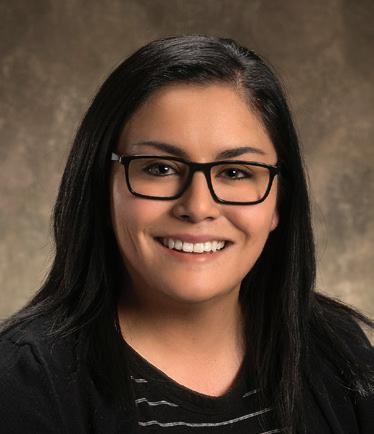
RaeAnn Gutierrez Co-chair
Collaborating with various campus constituents on Destination 2027 has been an invaluable experience and is evidence of Pueblo Community College’s endless commitment to student success. I would like to thank Shawna for her partnership in leading this effort, and President Erjavec for her mentorship and for placing her confidence in us. It has been an absolute pleasure.

Shawna Shoaf Co-chair
Pueblo Community College strives to be the heartbeat of our community and the energy put forth in our strategic plan attests to the commitment of our administration, faculty, and staff. I am honored to have been a guide to the meaningful engagement of the diverse voices representing the college and our community. I am grateful to all constituents who joined this important conversation. There have been countless hours and devotion put into this important work. I look forward to being witness to the unfolding and progress of our plan.
ACKNOWLEDGEMENTS

Pueblo Community College is the choice for personal and community success.

Pueblo Community College transforms lives of students, enriches communities, and strengthens regional economies. We empower individual achievement by providing inclusive, personalized support and innovative educational opportunities.

Achievement:
We engage a diverse student body and support all individuals in attaining high-quality learning outcomes to meet the demands of a global economy.
Excellence:
We foster continuous quality improvement and innovation by responding to the needs of the communities we serve.
Integrity:
We advance our mission ethically and equitably, through a culture of shared governance that demands accountability and excellence.
Respect:
We foster an open and inclusive environment that welcomes diverse backgrounds and opinions, recognizes individual talents, encourages personal and professional growth, and celebrates accomplishments.
Inclusive Teaching and Learning:
We value the exchange of knowledge and encourage lifelong learning for students, faculty, and staff.
Leadership and Teamwork:
We create collaborative opportunities to advance the communities we serve through innovative actions, strategic partnerships, and informed planning.

Innovation:
Encourage divergent thinking and intentional execution to drive continuous improvement.
Access:
Create educational opportunities for everyone.
Valuing People:
Cultivate growth opportunities so individuals can meet their full potential.
Diversity, Equity, and Inclusion:
Sustain a community respectful of cultures, backgrounds, and ideas.
Safety:
Commit to the safety and well-being of others.
Quality:
Add value and relevance through environmental scanning.
Imperatives from Destination 2022
CRITERIA AND STRATEGIC IMPERATIVE CROSSWALK
X indicates where previous Destination 2022 strategic imperatives intersect with the new Destination 2027 criteria.
I. Student Success and Meeting Stakeholder Needs II. High Performance Workforce Resource Stewardship and Operational Excellence III. Systemic & Sustainable Leadership IV. Empowering College Culture Criteria for Destination 2027 1. Mission X 2. Integrity X 3. Teaching & Learning: Quality, Resources, Support X 4. Teaching & Learning: Evaluation, Improvement X 5. Institutional Effectiveness & Resource Planning X
Strategic
Colorado Community College System (CCCS) 2015-2025 Strategic Plan
PRIORITIES TO CONSIDER
Colorado Department of Higher Education (CDHE) Master Plan
Pueblo Community College Strategic Framework: Diversity, Equity, & Inclusion (DEI)
Higher Learning Commission (HLC) Guiding Values
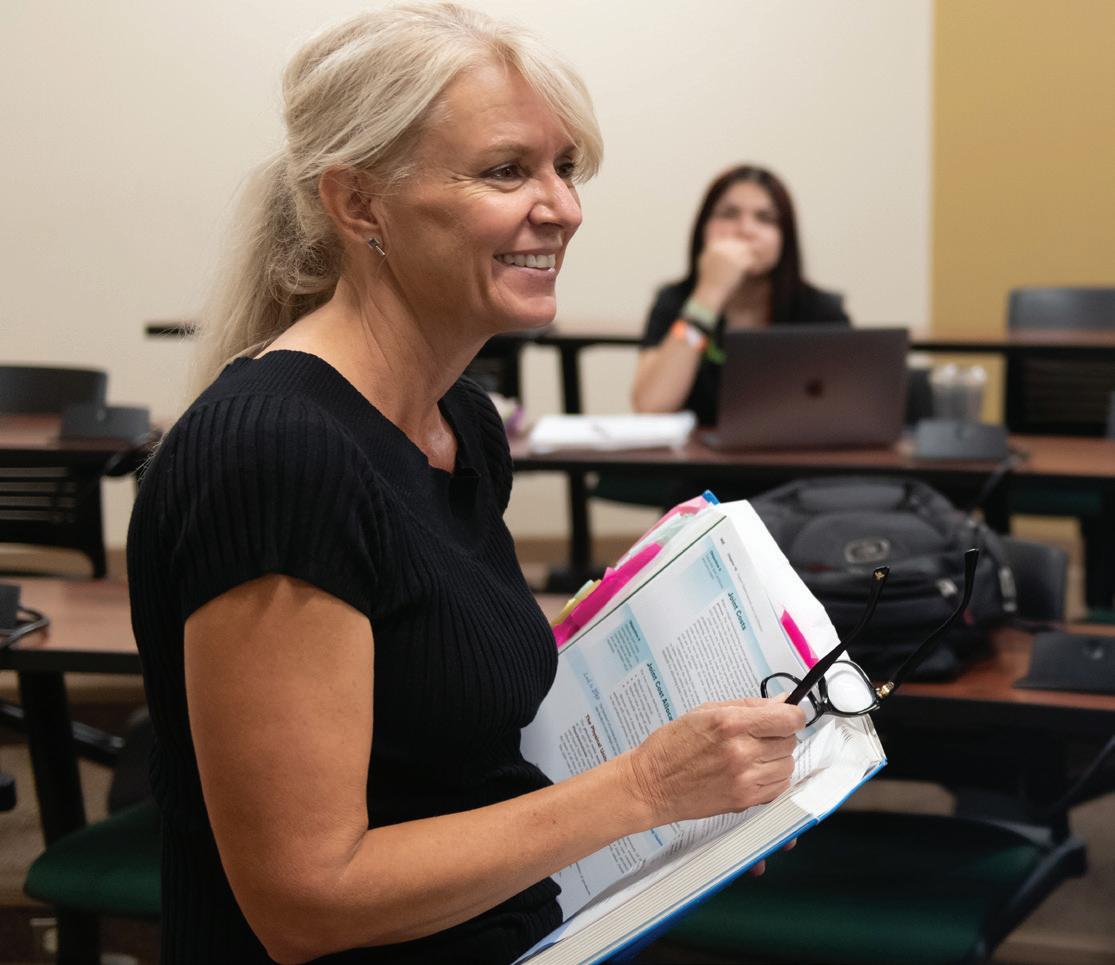

Create education without barriers through transformational partnerships. Transform our own workforce experience. Transform the student experience.
Redefine our value proposition through accessibility, affordability, quality, accountability, resource development, and operational excellence.
CCCS 2015-2025 STRATEGIC PLAN
MASTER


Increase knowledge and awareness of diversity, equity, and inclusion (DEI).
PCC DEI STRATEGIC FRAMEWORK
Build capacity for faculty involvement and leadership in DEI initiatives.
Increase student engagement and awareness in DEI.
Build capacity for institutional support and administrative leadership in DEI.
3.
2. Erase equity gaps 1. Increase credential completion
CDHE
PLAN 4. Invest in affordability and innovation
Improve student success
Focus on student learning
HLC GUIDING VALUES
Education for a diverse, technological, globally connected world
A culture of continuous improvement
Evidence-based institutional learning and self-presentation
Integrity, transparency, and ethical behavior or practice
Governance for the well-being of the institution
Planning & management of resources to ensure institutional sustainability
Mission-centered evaluation
Accreditation through peer review

Strategy:
A careful plan or method for achieving a particular goal.
Key Performance Indicator (KPI):
Quantifiable measures used to track or compare performance in meeting the strategies.
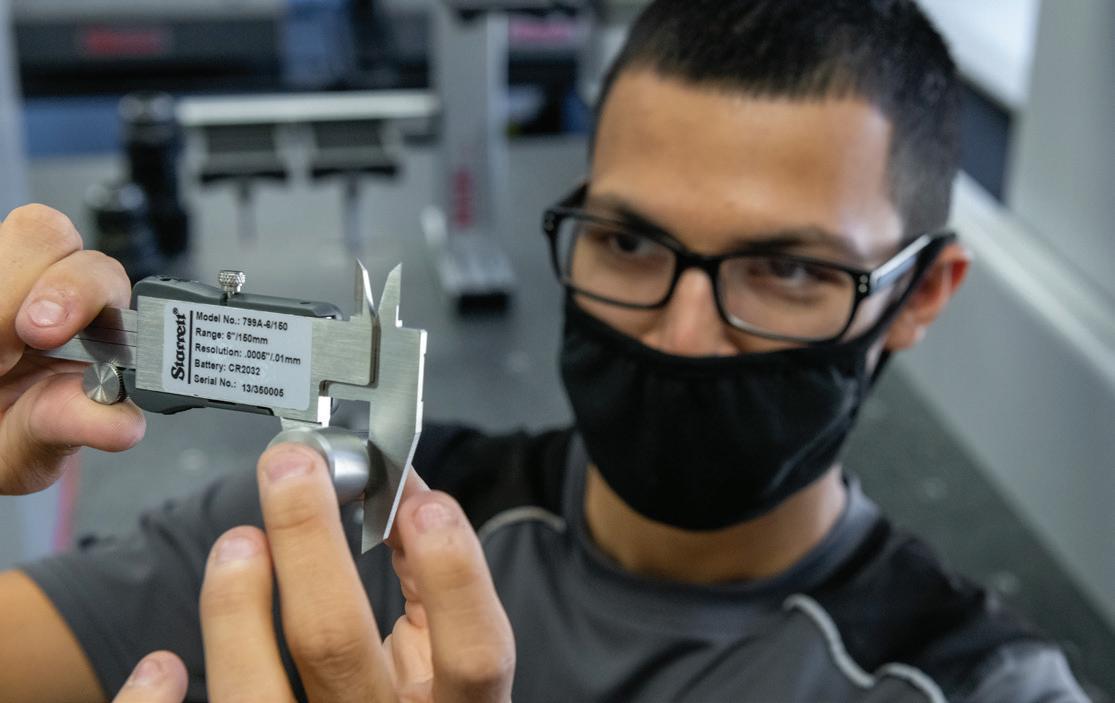
STRATEGY VS. KPI DEFINITIONS
Mission
Goal Statement: Pueblo Community College will create an inclusive culture dedicated to continuous improvement, shared governance and a shared devotion to student learning and support.
Strategy 1: Provide greater opportunities for social and economic mobility by addressing equity gaps and increasing opportunities for credential completions.
• KPI 1: Increase the credentials awarded to our underrepresented students by 1% annually.
• KPI 2: Increase overall student success by 1% annually per race/ethnicity and first-generation status.
Strategy 2: Prepare students to live, work, and succeed in a pluralistic society of unique perspective beyond their personal experience.
• KPI 1: Increase student retention by 2% annually per race/ethnicity and first-generation status.
• KPI 2: Increase overall pass rates by 1% annually per race/ethnicity and first-generation status.
Strategy 3: Expand flexible and innovative modes of delivery and teaching methodologies to support our diverse student needs by removing the barriers of time, space, and distance.
• KPI 1: Increase fall-to-fall retention of both full-time and part-time students by 1% annually.
• KPI 2: Increase enrollment intensity by 3 credit hours per degree-seeking student per year.
Strategy 4: Expand awareness of program offerings and support services available through personal, direct channels of communications.
• KPI 1: Increase usage of tutoring, pantry, medical, and behavioral health support services by 2% annually.
• KPI 2: Increase the number of unique student enrollments with a holistic advising appointment by 1% per semester.
Strategy 5: Promote self-advocacy, individual advocacy and systems advocacy for Hispanic students and staff.
• KPI 1: Increase retention of Hispanic students by 2% annually.
• KPI 2: Increase graduation completion of Hispanic students by 2% annually.
1 STRATEGIES & KPI s
CRITERION
Goal Statement: Pueblo Community College ensures faculty, staff, and students adhere to fair and ethical behavior in the pursuit of academic freedom, intellectual inquiry, and operational excellence.
Strategy 1: Purposefully grow an inclusive institution by engaging in diversity at all levels of employees, curriculum, policies, and communities.
• KPI 1: Increase total percentage of underrepresented employee applicants by 1% annually.
• KPI 2: Increase underrepresented employee representation by 1% annually.
• KPI 3: Increase underrepresented student applicant yield by 1% annually.
• KPI 4: Increase Hispanic employee representation by 2% annually.
• KPI 5: Increase faculty and staff trained in culturally relevant pedagogy/practice by 2% annually.
Strategy 2: Respectfully engage stakeholders in open dialogue opportunities and intentional communication through expanded shared governance efforts.
• KPI 1: Provide one college-wide cultural competency training for all employees each year with 75% engagement and successful completion of each experience.
• KPI 2: Add one student representative to shared governance committees at the decision-making level.
• KPI 3: Provide quarterly updates on the budget and use of resources at a college-wide forum.
Strategy 3: Routinely evaluate the effectiveness of college processes by assessing the student experience.
• KPI 1: Administer an annual survey of the PCC Promise to all internal stakeholders with a goal of achieving 80% positive responses.
• KPI 2: Administer the Community College Survey of Student Engagement every two years to all students.
KPI s
CRITERION 2 STRATEGIES &
Integrity
Teaching & Learning: Quality, Resources, Support
Goal Statement: PCC will implement bold initiatives that expand state-of-the-art teaching and learning resources, supporting equitable avenues for exceptional educational experiences to meet workforce needs.
Strategy 1: Strengthen community connections and improve resources to develop essential traits, industry preparedness, and professional competencies for students transitioning into the workforce or transferring to a four-year university.
• KPI 1: Establish an Office of Career and Community Connection.
• KPI 2: Offer one campus outreach event per academic division per semester for students to engage in experiential learning opportunities.
Strategy 2: Develop a Teaching Excellence Academy for faculty-driven personal and professional development that provides all faculty and instructors on all campuses with multiple and varied opportunities to engage in professional development that can be tailored to meet program-specific needs.
• KPI 1: Align initiatives and outcomes from the Title V grant to fund faculty and instructor professional development opportunities.
• KPI 2: Identify and implement funding from Perkins grant to support professional development for Career and Technical Education (CTE) faculty and instructors.
Strategy 3: Develop competency-based programs with multiple entry points throughout a semester for greater ease and value-added educational opportunities.
• KPI 1: Pilot/add one CTE program and one General Education program per year.
• KPI 2: Add and assess two 5-week course success rates over a rolling 3-semester period.
Strategy 4: Increase credentialing of adult learners through accelerated pathways.
• KPI 1: Increase the enrollment in course offerings available on weekends and/or evenings by 1% annually.
• KPI 2: Increase certificates/degrees awarded in adult learner population.
• KPI 3: Increase degree completion, internship opportunities, and support to workforce engagement by 2% annually.
• KPI 4: Increase direct employment pathways for Hispanic students by 2% annually to facilitate financial sustainability. OR - add 1 microcredential program per year to promote economic mobility for Hispanic students.
CRITERION 3 STRATEGIES & KPI s
Teaching & Learning: Evaluation, Improvement
Goal Statement: Pueblo Community College creates a culture of innovation and support to ensure students will acquire the knowledge, skills, and experience necessary for advanced education, successful careers, and personal growth.
Strategy 1: Offer high-impact educational experiences to prepare students to thrive in a diverse society.
• KPI 1: Offer at least one co-curricular, social, cultural or recreational experience or activity each semester per division/campus or program, for student enrichment through engagement with different cultures, perspectives, and people.
Strategy 2: Partner with regional and national educational and industry partners using remote technology/ delivery to offer high-quality education not currently available in PCC’s service area that will differentiate our institution.
• KPI 1: Engage 5 guest lecturers for Place for Enrichment and Academic Knowledge (PEAK) events per year.
Strategy 3: Provide a holistic enrollment process that minimizes student obstacles and assists students in determining the appropriate course delivery that will maximize student success.
• KPI 1: Increase student utilization of Navigate for enrollment by 5% per year.
• KPI 2: Develop and embed an assessment tool into Navigate that will help advise students into the course delivery that will yield the most academic success.
• KPI 3: Increase staff and faculty utilization of Navigate for enrollment by 5% per year.
• KPI 4: Student success coaches and faculty meet a minimum of twice a year, and at department meetings as necessary, to discuss and collaborate on best practices for student retention, persistence, and program completion.
Strategy 4: Expand institutional learning objectives to include diversity, world-mindedness, and inclusion.
• KPI 1: Develop a new 5-year plan for assessment of student learning that is driven by faculty.
• KPI 2: Add 1 DEI-related Program Student Learning Outcome to every program.
• KPI 3: Increase faculty and instructor participation in assessment of student learning by 5% annually.
• KPI 4: Add 1 DEI-specific Institutional Student Learning Outcome that promotes a shared cultural understanding across the student body.
• KPI 5: Add 1 Hispanic student learning outcome to every program/department
Strategy 5: Enhance the Coordinated Care Model to improve student success.
• KPI 1: Establish a student success committee comprising faculty, staff, and students to align retention efforts.
• KPI 2: Introduce 1-2 cohort-based programs per academic year.
• KPI 3: Establish model for Hispanic students that focuses on total health and health outcomes associated with lifestyle behaviors.
CRITERION 4 STRATEGIES & KPI s
Institutional Effectiveness, Resources and Planning
Goal Statement: PCC’s leadership facilitates a transparent environment to evaluate operational effectiveness and stewardship in providing the framework for continuous improvement.
Strategy 1: Engage students in technology support throughout the college.
• KPI 1: Identify and train one student cohort per year to staff a help desk.
• KPI 2: Add Desire 2 Learn course delivery orientation to all courses before students can access any firstsemester material.
• KPI 3: Add technology competency to all courses so that students enhance their technical skills in collaboration with faculty.
Strategy 2: Develop a structure for staff professional development that provides all APT and Classified personnel with multiple and varied opportunities to engage in professional and program specific development.
• KPI 1: Increase cross-departmental and inter-professional education awareness of operational developments and processes by adding one departmental announcement to the President’s weekly update.
• KPI 2: Add “innovation of the semester” award requiring presentation of PRINs and contributions to the campus effectiveness.
• KPI 3: Add professional development as a required discussion topic to the performance evaluation process.
Strategy 3: Align financial resources to allow for Destination 2027 strategies and related initiatives to foster further innovation and responsiveness.
• KPI 1: Hold a budget summit at the end of each semester to provide the college with financial impacts of enrollment and legislative support and to welcome stakeholder dialogue and input on future allocation of the college’s financial resources.
• KPI 2: Identify three key strategic priorities per year using stakeholder input, business intelligence (peer, national, regional and state institutions measures of operational effectiveness) and predictive analytics.
• KPI 3: Seek one non-general funded resource and grant opportunity per division annually.
• KPI 4: Engage in one Hispanic Association of Colleges and Universities initiative per year in pursuit of financial resources for Hispanic-serving institutions.
Strategy 4: Explore the opportunity to provide student transcripts that bear record of credit, non-credit, and competency-based course completion and Continuing Education Units (CEUs).
• KPI 1: Explore a national partnership, such as with Education Advisory Board, to develop a model to transcript credit, non-credit, and competency-based programs (digital badges).
CRITERION 5 STRATEGIES & KPI s

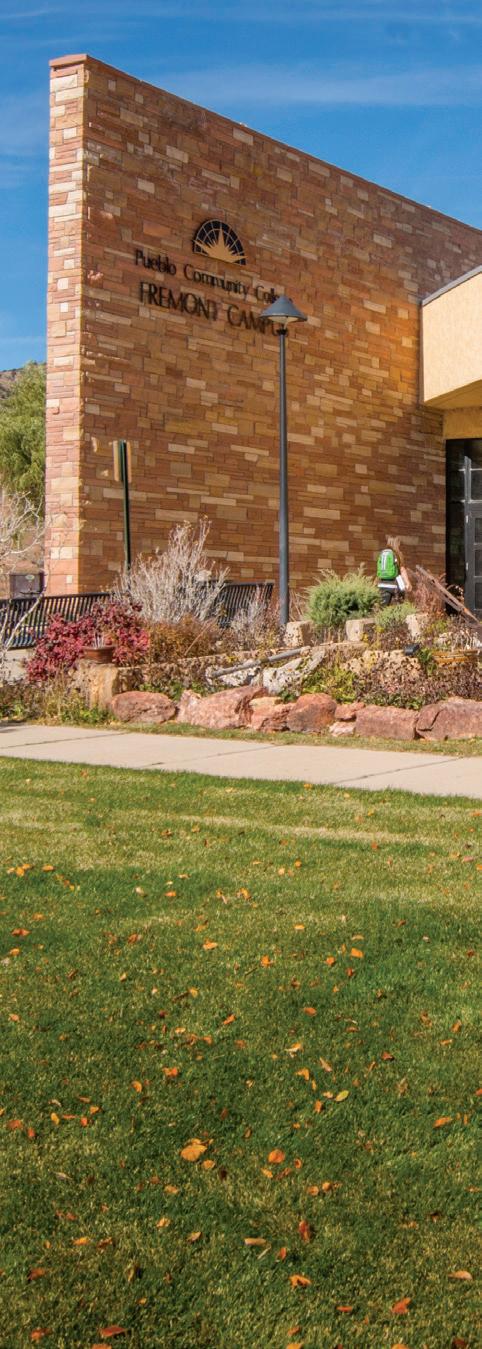
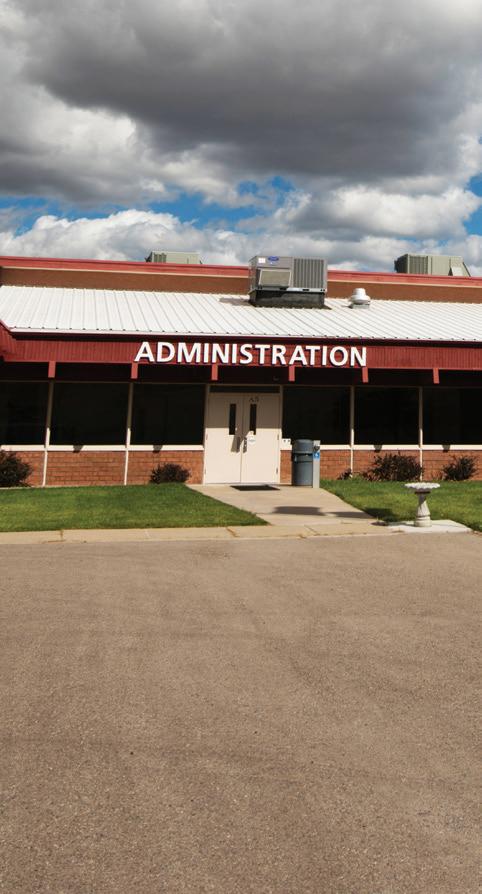

PUEBLO CAÑON CITY MANCOS DURANGO Pueblo Community College 900 W. Orman Ave. Pueblo, CO 81004 719.549.3200 | pueblocc.edu


















